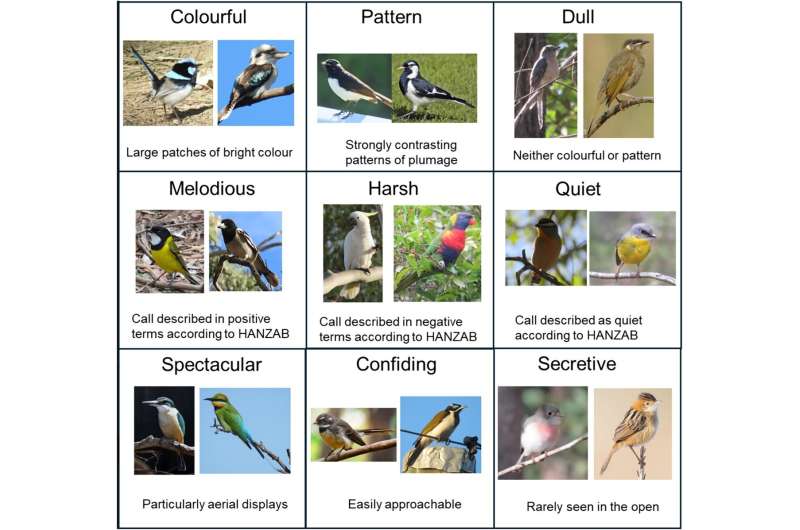This article has been reviewed according to Science X's editorial process and policies. Editors have highlighted the following attributes while ensuring the content's credibility:
fact-checked
trusted source
proofread
Colorful, melodious birds at risk from poor urban planning

Research led by Griffith University reveals how urban areas in Brisbane are losing bird species with characteristics that people find most "aesthetically pleasing."
The study, led by Dr. Andres Felipe Suarez Castro, found 82 different bird species across 42 different landscape types in Brisbane, but the variety of smaller, colorful, "melodious" bird species decreased in areas where there were not enough green spaces and fragmented landscapes.
The findings are published in the journal Landscape Ecology in a paper titled "Landscape structure influences the spatial distribution of urban bird attractiveness."
Dr. Suarez-Castro said these outcomes highlighted the importance of designing urban landscapes in future developments that increased opportunities to find colorful and melodious birds and favor people's connection with nature.
Beauty can be subjective, but several studies have demonstrated that traits such as color, size and shape favor positive feelings and perceptions of species as beneficial.
"'Attractive' traits could even influence human preferences toward conserving species and support education and fundraising," Dr. Suarez-Castro said.
The results show that some species like the Scarlet Honeyeater (Myzomela sanguinolenta) and the Yellow-faced Honeyeater (Lichenostomus chrysops) were lost in highly urbanized environments.
When the number of species was low, landscapes could support some species that are considered "attractive" based on their traits, such as the (Rainbow Lorikeet Trichoglossus haematodus and Willie Wagtail Rhipidura leucophrys).
However, the overall attractiveness of a variety of different species could decline, as small-bodied, colorful and melodious species were negatively affected by built infrastructure and fragmentation.
It corresponded with the loss of species with high attractiveness values, such as small-bodied forest-dependent species that tended to be more vulnerable to urbanization (White-throated Gerygone Gerygone olivace and Australian Golden Whistler Pachycephala pectoralis).
"But there is potential to maintain attractive assemblages in cities," Dr. Suarez-Castro said. "Urban planning should consider how to bring back vibrant, colorful birdlife to our cities, enriching our daily lives and reconnecting us with nature in the very places we live and work.
"There are relatively easy fixes like creating green corridors and adding diverse vegetation in parks and gardens. These strategies can provide key habitats for many colorful species with a high diversity of calls."
This information could help to track the success of initiatives that seek to achieve wins for both biodiversity and human well-being, and it could lead to greater support for conservation and positive human health outcomes.
More information: Andres F. Suarez-Castro et al, Landscape structure influences the spatial distribution of urban bird attractiveness, Landscape Ecology (2024). DOI: 10.1007/s10980-024-01950-9
Provided by Griffith University




















